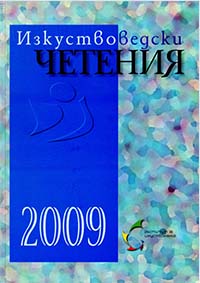Икони на Захарий Цанюв от старата църква „Рождество Богородично" във Велико Търново
Icons of Zacharii Tzaniov in the Old Church of Nativity of the Holy Virgin in Veliko Tarnovo
Author(s): Plamen SabevSubject(s): Theatre, Dance, Performing Arts
Published by: Институт за изследване на изкуствата, Българска академия на науките
Summary/Abstract: According to the historical records, in the noblemen's quarters of Tarnovo, in the 18th century existed a church named Nativity of the Holy Virgin. After the Liberation of the country, by the Russian diplomat's proposal, the church became the official cathedral temple of the newly liberated town. Its building started in a very significant historical moment, soon after the conclusion of the peace treaty of Odrin in 1830. The firm and splendid facade raised by Kolio Fichetto was an important spiritual, social and political center of the old capital between 1844 and 1913. Its importance was outlined by the impressive monumental structure and rhythm of the architectural forms. Unfortunately, the earthquake that stroke in 1913 demolished any opportunity to get a real idea about its interior decorations. The first cube of the lost mosaic pane has the name of Stanyo Neikov Marangozina. He made the wooden parts of the iconostasis in 1844. From the iconostasis, which hasn't survived, we have three monumental icons - Deices (Jesus Christ, the God's Mother and St. John the Persecutor), the Holy Virgin with the baby Jesus and St. Archangel Michael. Besides these, we have another surviving icon, that of St. Mina, with scenes of his martyrdom and few of the miracles he committed after his death. The painting style which is identical, as well as the size of the icons is leading us to the conclusion that their author was the very popular artist of the Troyan artistic school Zachari Tzaniov. While he was finishing his works for the Tarnovo's temple, he decided to make it in such a way, so that he outlined the close connections between the traditional art and the ecclesiastical literature. To some of the characters he added parts of specially chosen paragraphs from some orthodox texts. The present study has the task to accentuate the ideas and the possible influences in the icons painted in 1844 and 1847.
Journal: Изкуствоведски четения
- Issue Year: 2009
- Issue No: 5
- Page Range: 193-202
- Page Count: 10
- Language: Bulgarian
- Content File-PDF

